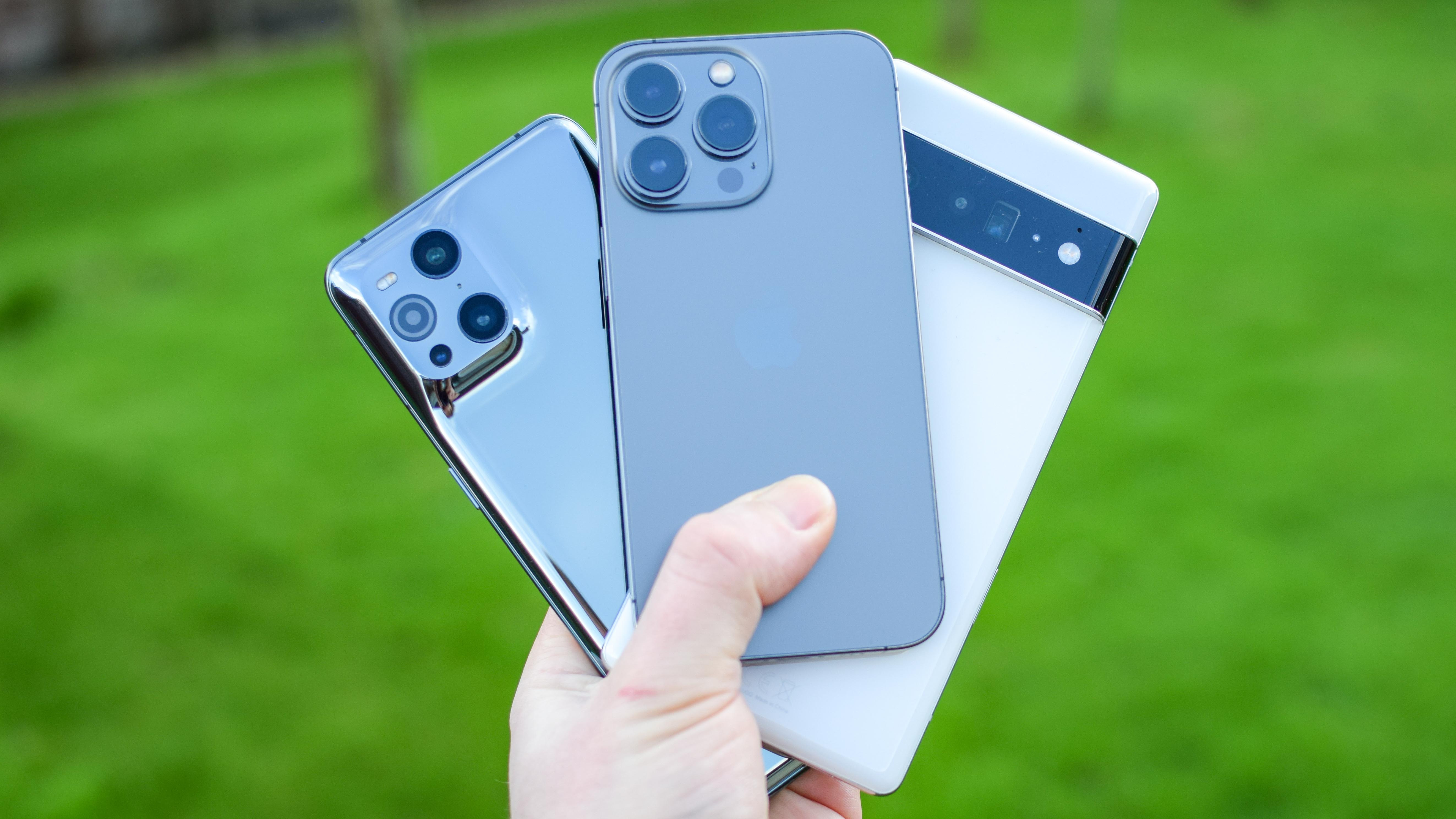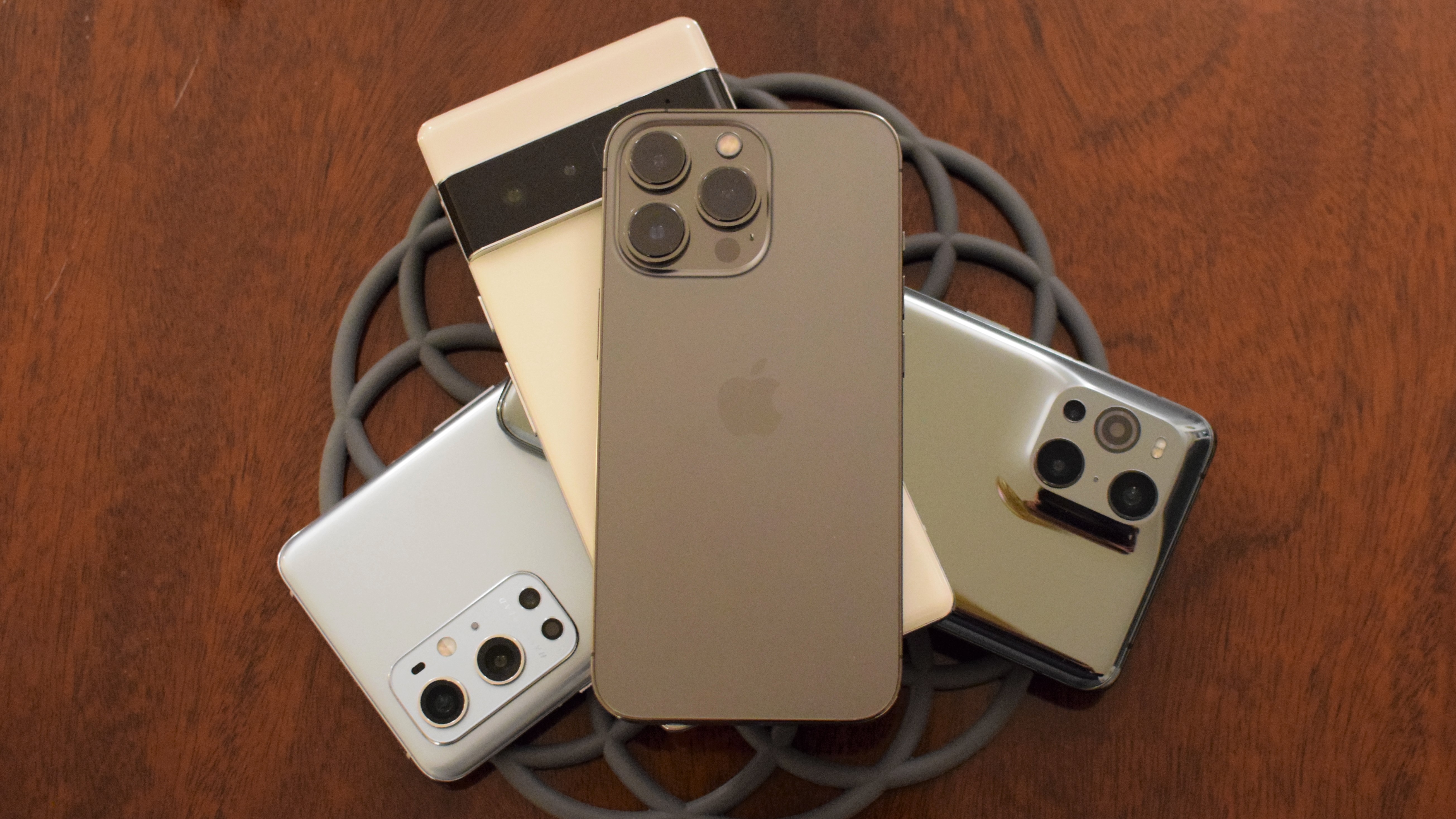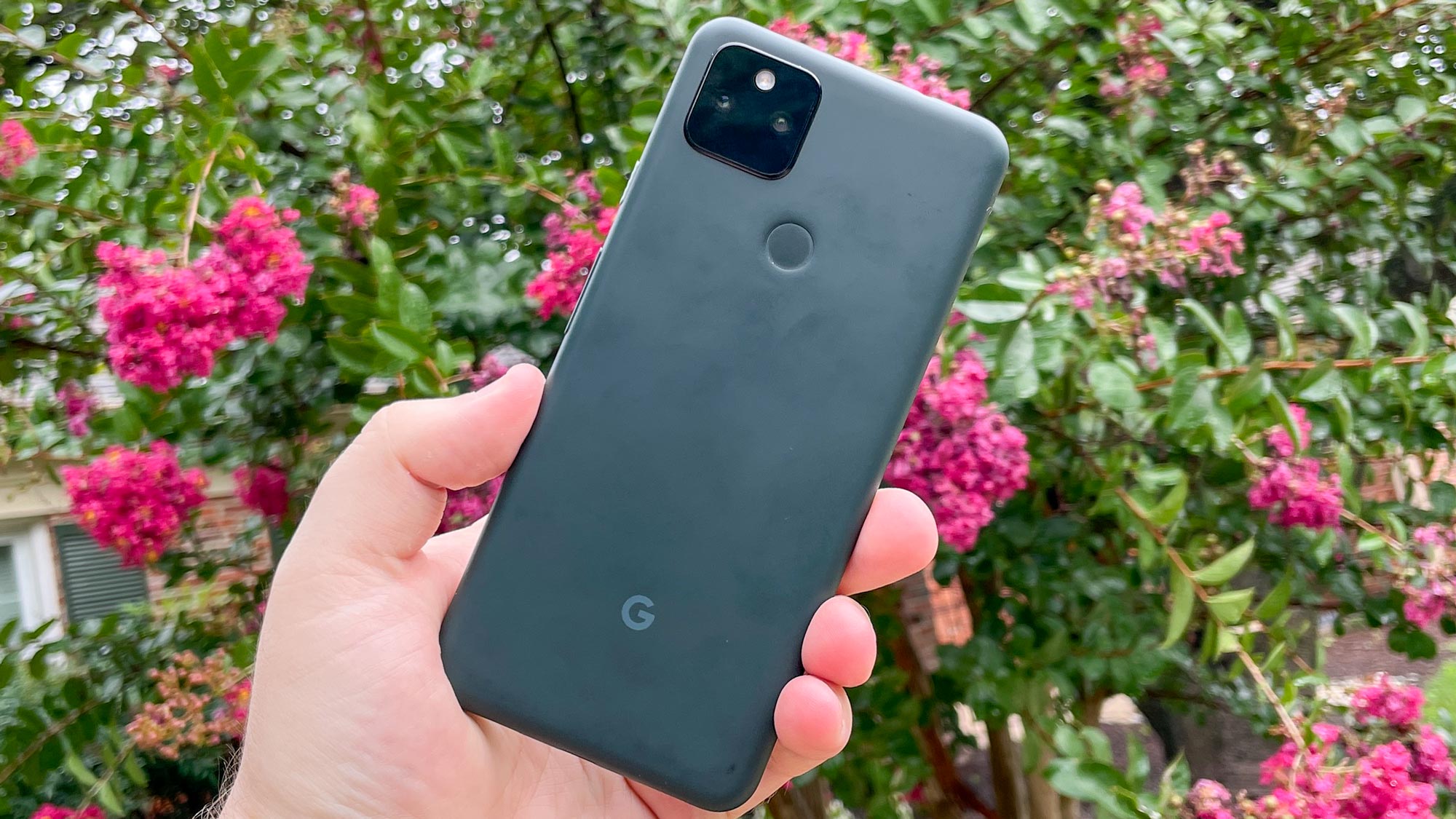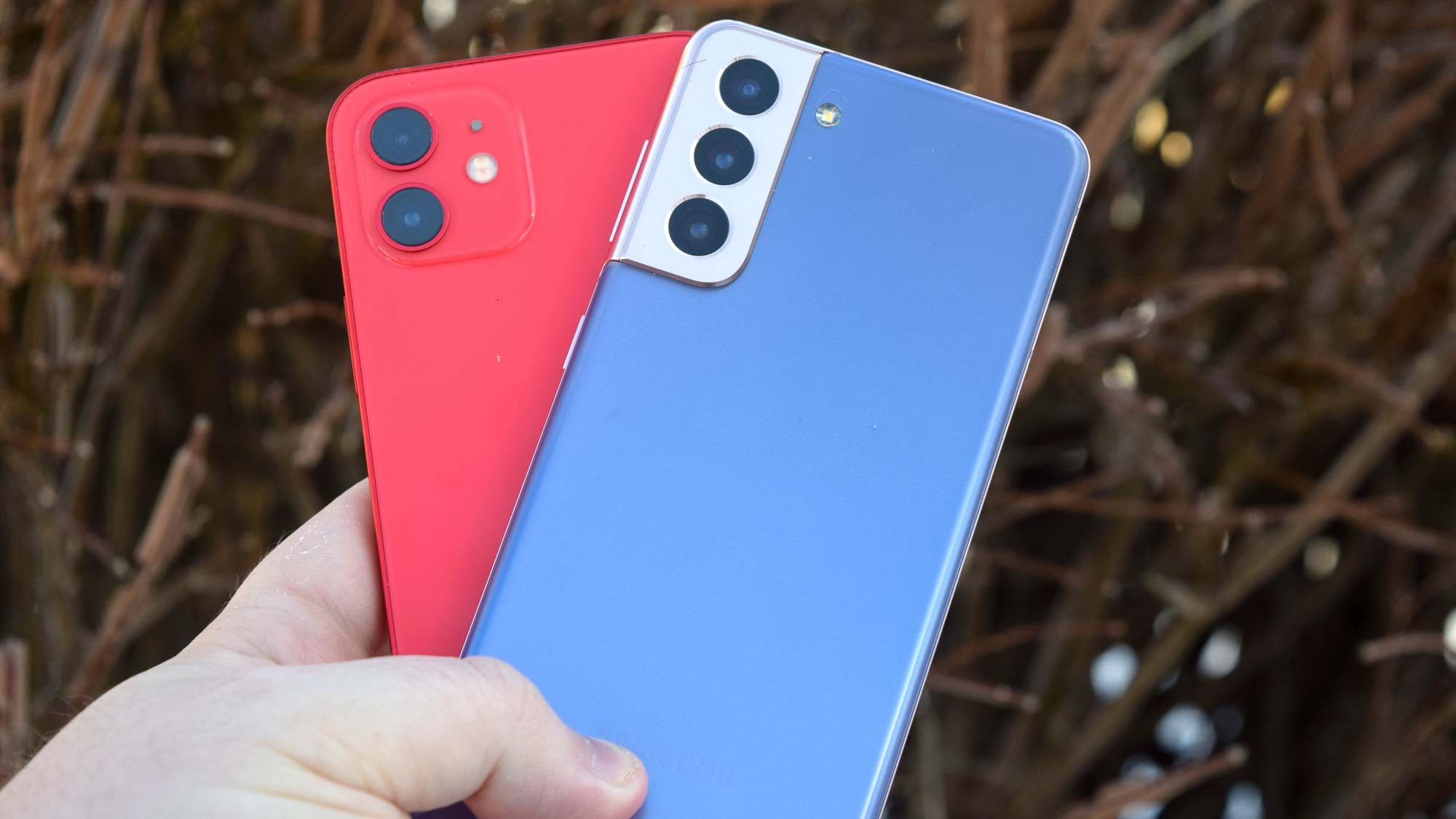Forget iPhone 14 Max — this is the perfect iPhone size
The 6.1-inch iPhone 14 will be big enough

Hype is building around the iPhone 14 Max, a rumored larger-screened take on the standard iPhone 14, giving people the option to go large without going Pro. Only it’s not the model I’m interested in.
That would be the standard iPhone 14, or more likely the iPhone 14 Pro, with its tipped 6.12-inch display.
The reason being, I’ve come to the conclusion that around 6.1 inches is the best screen size for a smartphone. Allow me to explain.
Big was better

My first smartphone was the iPhone 4s, a lovely device that felt like a magical little computer at the time. Now looking over its busted body — thanks to a swollen battery — I struggle to remember how I got anything done on a tiny 3.5-inch display.
All perfectly understandable, as pretty much every top-end flagship phone I've tested over the past few years has been a big-screened beast; most recently I've been using the Google Pixel 6 Pro with its 6.7 inch display, Oppo Find X5 Pro also at 6.7 inches, and the Samsung Galaxy S22 Ultra with its expansive 6.8-inch screen. That's to say nothing of the Samsung Galaxy Z Fold 3 and its folding display.
Read next: 11 tips to save battery life on your iPhone.
And I've been all for that, as I've loved using big-screen phones; the extra space is great for getting stuff done on the go, as well as watching videos and playing games.
But that's slowly changed and I've come to the conclusion that there’s no real need for phones to have screens more than, say, 6.2 inches in size.
This change of tech heart came into effect in 2020, with the Google Pixel 5.
Pandemic-perfect pocketable phones

I'd already waxed lyrical about why the Pixel 5 was my favorite Android phone of 2020, but my regular cadence of phone testing took me away from Google's last-gen Pixel. Yet it left a lasting effect.
The reason for that was in part because the Pixel 5 is a lovely phone, but also down to the coronavirus restrictions of 2020 going into 2021.
Thanks to the Covid-19 pandemic, I found myself doing a lot of walking to escape the confines of my small apartment. And that meant having a phone that easily slipped into my pocket without feeling like I was carrying around a slab of glass, yet had enough screen space for me to easily keep an eye on Slack, Gmail and so on. So the Pixel 5 was a low-key boon to my wandering life.
As I adjusted to a smaller-than-usual screen, I came to the realization that around 6 inches is plenty (stop sniggering at the back), all thanks to the adoption of ever slimmer bezels by a lot of recent smartphones. This was hammered home when I moved onto the Samsung Galaxy S21, as its flat 6.2-inch display with trim bezels made it seem a lot bigger than it really was, yet was still usable with one hand.

Now my phone of choice is the iPhone 13 Pro, which I think has nailed the formula. The combination of its 6.1-inch Retina display and flat edges means the screen feels suitably large, yet the phone is still easy (for me, at least) to use with one hand: the lack of rounded edges also means the phone doesn't feel like it'll fly out of my hands during a flurry of taps.
Conversely, the 6.7-inch iPhone 13 Pro Max used by a few of my colleagues looks like an unwieldy slab of metal and glass. Yes, it’s worthy of our best phones top spot, but I can’t help thinking the flat design looks ungainly for a phone that big; I don’t think the rumored design of the 14 Max or Pro Max will change that either. In fact, the iPhone 14 Pro series is tipped to get a larger camera bump.
Further backing up my view that the iPhone 13 Pro is arguably my new favorite phone, is the fact that — unlike the divide between the Galaxy S22 and Galaxy S22 Ultra — you make no major compromises, going for the iPhone 13 Pro over the larger iPhone 13 Pro Max, beyond a slight hit to battery life.
And I think more phone makers should follow Apple's example here (yes I know there were differences between the iPhone 12 Pro and iPhone 12 Pro Max). I want there to be more flagship phones that come in what one could now call a medium size, without compromising on camera specs or storage.
For example, I'd like to see the Google Pixel 7 offer two screen sizes but not force people to get the larger Pro handset if they want an extra camera or a 120Hz display. And while it might result in an overkill of choice, perhaps the Galaxy S23 range could offer an Ultra model with both large and medium screen options.
I'd be fairly certain there are quite a few people who'd want that. While the iPhone 13 mini may be a bit of a sales dud, I've seen a lot more people with 13 Pros than 13 Pro Max-es.
With that in mind, I can see myself opting for the iPhone 14 Pro over either Max model. But on a wider view, I think it’s time phone makers embrace the idea that you don't need a massive screen to be a flagship phone, just killer specs and features. And a 6.1 inch display might just be the perfect size.
Sign up to get the BEST of Tom's Guide direct to your inbox.
Get instant access to breaking news, the hottest reviews, great deals and helpful tips.
Roland Moore-Colyer a Managing Editor at Tom’s Guide with a focus on news, features and opinion articles. He often writes about gaming, phones, laptops and other bits of hardware; he’s also got an interest in cars. When not at his desk Roland can be found wandering around London, often with a look of curiosity on his face.
-
19paul70 I prefer the one-handed dimensions of the 12/13 mini. Just wish they made one this small with pro specs... After retiring my beloved 5s and for several years dealing with the oversized 6s and 8, I rushed out and bought the first 12 mini I could get. I expect that many like me considered buying the 13 mini, but the upgrade was so minimal that it wasn't worth the cost. Apple - please consider releasing mini updates on odd/even years at minumum so we can enjoy the IOS experience on a reasonably sized handheld form factor.Reply
-Paul

